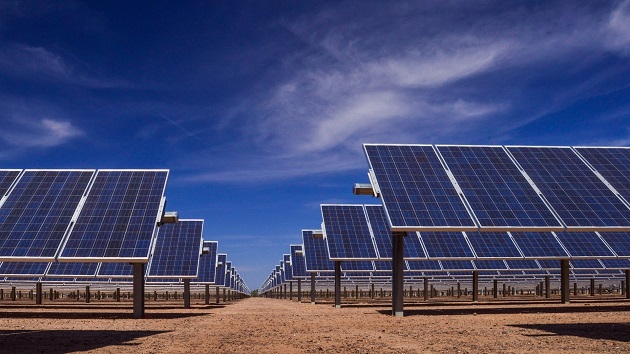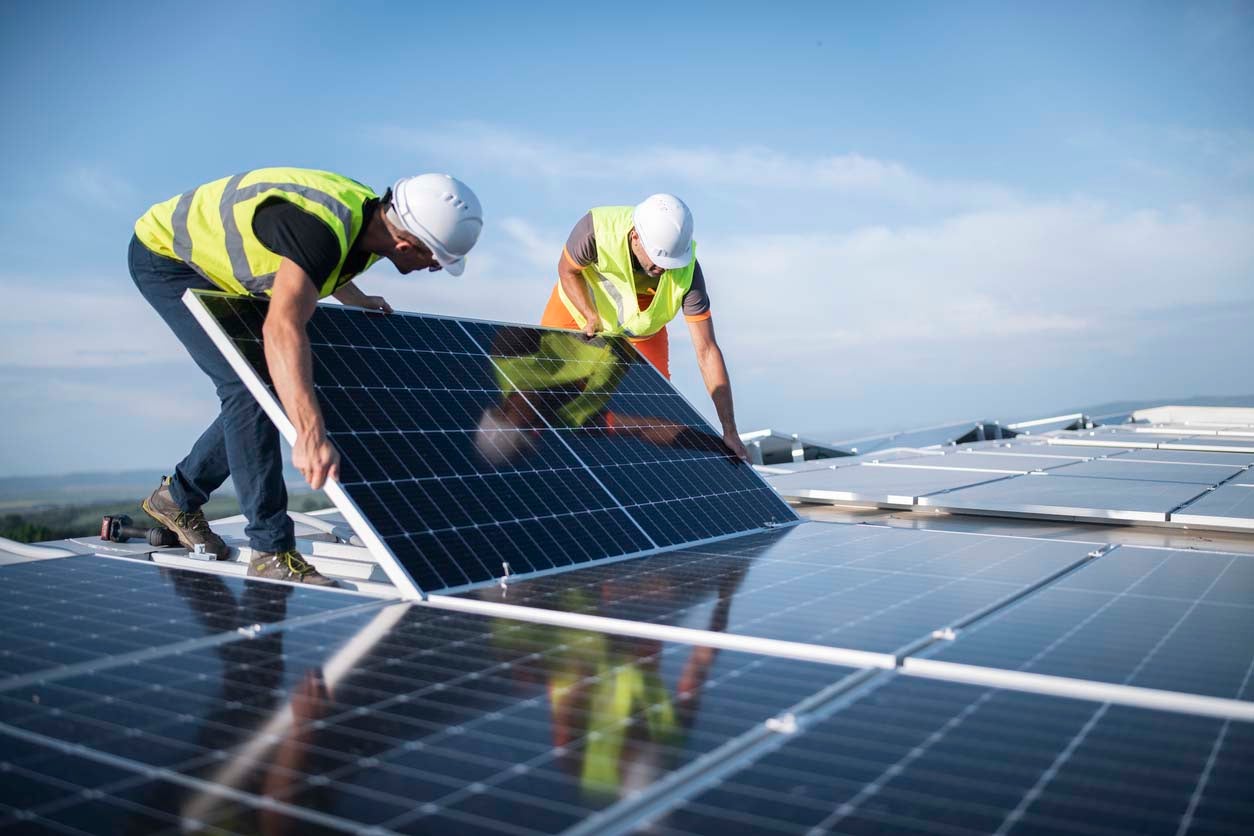Energy Storage Installers Virginia: Lumina Solar Focuses On Supplying Advanced Photovoltaic Solutions For Houses And Services
History and Establishing
Have you ever questioned how a solar panel company springs from a mere spark of motivation into a powerhouse of renewable resource? It frequently begins with a vision-- one sustained by a mix of innovation, decision, and a pinch of serendipity. The journey of many solar business mirrors the advancement of the innovation itself: from large, ineffective panels to smooth, high-efficiency marvels utilizing the sun's bounty.
The Early Days
In the late 20th century, when solar energy was still a specific niche concept, pioneers planted seeds for what would end up being an international movement. Think of a small workshop filled with curious engineers, tirelessly try out photovoltaic cells. Their enthusiasm was palpable, typically driven by a desire to combat climate modification and reduce dependence on nonrenewable fuel sources.
One such anecdote has to do with a creator who, influenced by a camping journey, realized that even in remote locations, the sun might power necessary devices. This easy observation sparked a company's mission to democratize access website to tidy energy.
Establishing Principles

- Innovation: Continuously pushing the boundaries of solar innovation to enhance effectiveness and resilience.
- Sustainability: Devoting to environmentally friendly production and lowering carbon footprints.
- Ease of access: Making sustainable energy services economical and practical for daily users.
Turning points in Growth
| Year | Secret Event |
|---|---|
| 1985 | Business founded in a small garage, focusing on research study and development. |
| 1995 | Commercial solar panel product launched, acquiring local attention. |
| 2005 | Broadened to worldwide markets, embracing international sustainable energy objectives. |
| 2015 | Presented cutting-edge photovoltaic panel technology with improved energy conversion. |
Isn't it interesting how these incremental steps, frequently ignored, shape the energy landscape today? The photovoltaic panel business story is not almost technology; it has to do with a relentless quest for a brighter, cleaner future.

Developments in Solar Panel Technologies
Ever observed how some solar panels gleam brighter and last longer? It's not magic; it's the science of photovoltaic effectiveness. Modern solar panel business invest heavily in innovations like bifacial cells, which record sunshine from both sides, boosting energy harvest without broadening roofing area. Have you ever questioned why some panels perform much better on cloudy days? That is because of advances in thin-film solar innovation, which prospers under diffused light conditions.
Item Variations Customized to Unique Requirements
One size never fits all. Photovoltaic panel providers now use:
- Monocrystalline panels for optimum efficiency and smooth visual appeals, suitable for space-constrained roofs.
- Polycrystalline panels, which use an affordable alternative without compromising excessive output.
- Building-integrated photovoltaics (BIPV), merging solar tech perfectly into architectural elements like windows and facades.
Picking the best item isn't just about upfront cost; it's about matching your environment, energy objectives, and long-term cost savings. For instance, homes shaded by trees need panels that master low-light situations, something lots of overlook until energy bills climb up unexpectedly.
Technical Tips for Optimum Choice
- Evaluate the temperature coefficient-- lower values mean panels lose less effectiveness on hot days.
- Try to find panels with boosted anti-reflective finishes to make the most of light absorption.
- Think about the panel's guarantee not just for flaws, however for guaranteed power output over decades.
- Don't ignore the importance of the inverter innovation paired with the panels; it can make or break your system's performance.
Beyond Panels: Emerging Patterns
Picture solar panels that adjust their angle instantly to go after the sun-- tracking systems are becoming more available, increasing yield substantially. Or solar tiles that mix invisibly into your roofline, changing your home into a quiet, self-dependent power generator. These developments are improving what a photovoltaic panel business provides-- not simply items, but incorporated energy options.
Market Presence and Global Operations
Ever wonder why some photovoltaic panel business appear to grow up in every corner of the globe while others hardly make a ripple? The distinction lies not simply in innovation but in mastering the art of navigating varied markets. Expanding internationally resembles planting seeds in various environments-- you must understand each environment's unique conditions to grow.
Take, for circumstances, the intricate dance of logistics and supply chain management. Shipping panels midway throughout the world isn't practically range; it has to do with timing, customs, tariffs, and adapting to local demand variations. A company with robust international operations anticipates these variables, guaranteeing panels arrive on schedule without inflating expenses. This insight is no little feat and typically separates market leaders from fans.
Secret Techniques for Expanding Market Existence
- Localized manufacturing: Establishing production centers near target markets reduces shipping hold-ups and import complexities.
- Strategic collaborations: Working together with regional companies accelerates market penetration and constructs trust.
- Adaptive item style: Tailoring photovoltaic panel tech to weather, sun intensity, and infrastructure subtleties improves efficiency and approval.
What about the human aspect? Photovoltaic panel companies operating globally must reconcile cultural distinctions and regulatory subtleties without losing sight of their core objective. What works in a sun-drenched desert might fail in a humid coastal region. Sometimes, the most innovative option is merely listening-- taking in local insights to refine innovation and approach.
Experts frequently advise a phased rollout instead of a shotgun growth. Why risk overextension when determined growth develops sustainable momentum? Scaling wisely suggests balancing aspiration with functional resilience - Commercial Solar Panels Virginia. After all, in the race for sustainable energy supremacy, patience can be as important as speed
Environmental Effect and Sustainability Practices
When solar panels first emerged, numerous assumed they carried zero ecological baggage. The reality is more nuanced. The production of solar batteries includes unusual earth metals and energy-intensive processes, which can leave a sizable carbon footprint before the panels even reach rooftops. Yet, the real environmental cost depends heavily on the sustainability practices utilized by the solar panel business throughout the lifecycle of their products.
How frequently do we stop briefly to consider what takes place to photovoltaic panels at the end of their beneficial life? Unlike batteries or electronic devices, solar panels can last 25-30 years, but disposal and recycling pathways remain underdeveloped in numerous regions. A business dedicated to decreasing ecological damage will have a robust plan for recycling photovoltaic materials, restoring important silicon, glass, and metals to avoid land fill build-up.
Secret Sustainability Strategies
- Making use of low-impact manufacturing techniques that minimize water and energy intake.
- Executing closed-loop systems to recycle production waste back into new panels.
- Participating in transparent supply chain audits to make sure ethical sourcing of raw materials.
- Designing panels for much easier disassembly to aid future recycling efforts.
It deserves keeping in mind that some solar business have actually originated innovative approaches, such as integrating naturally degradable elements or using less hazardous chemicals throughout fabrication. This not only minimizes environmental strain however likewise sets a precedent for the market. The question remains: can the solar industry really pivot towards a circular economy model without sacrificing performance or affordability?
Professional Tips for Assessing Sustainability
- Ask about the business's dedication to carbon-neutral production and whether they balance out emissions.
- Investigate if they partner with licensed recycling centers committed to solar panel waste.
- Search for transparency reports detailing ecological effects and sustainability goals.
- Consider the longevity and guarantee of panels as an indirect measure of resource effectiveness.
In the end, choosing for solar power needs to mean more than just slashing electrical power bills; it's about supporting a future where energy is harvested responsibly and waste is thoughtfully handled. Solar panel business that embrace this approach not only brighten homes but also cast a brighter light on sustainable innovation.